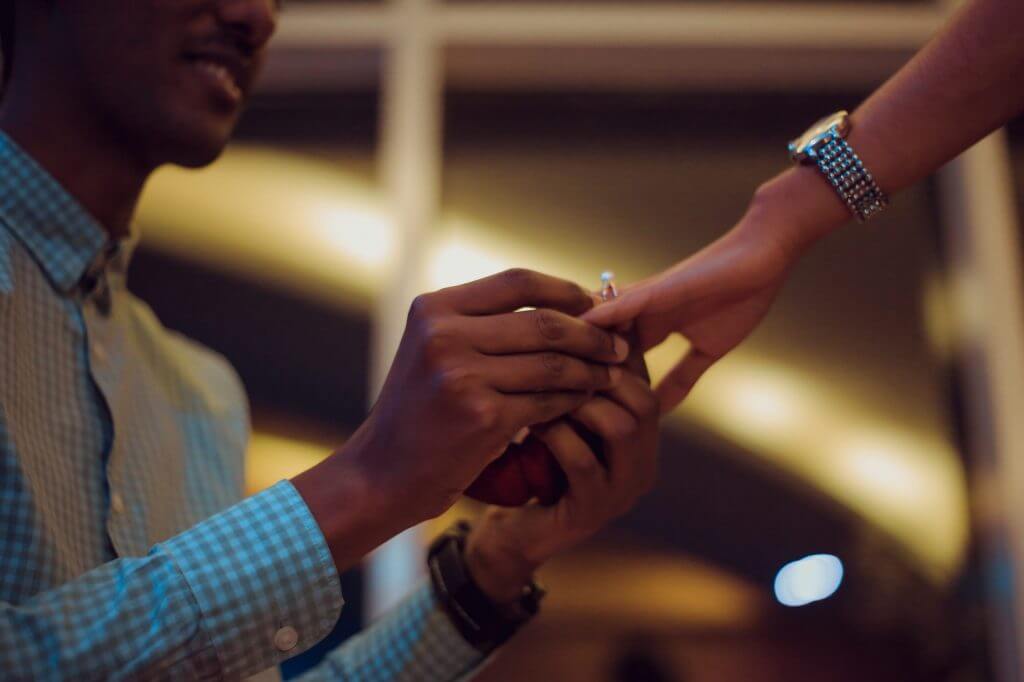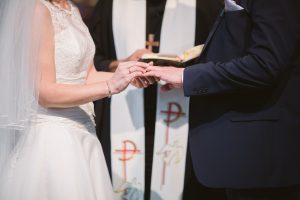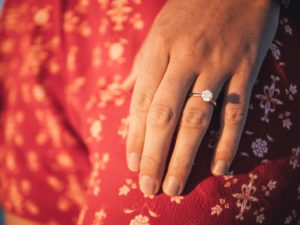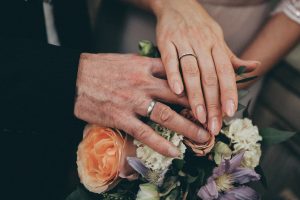Before you make that trip to the jewelry store...
Have you ever considered proposing to your beloved with an iron band? Or perhaps a bone bracelet? What about a thimble?
No? But these are all historically accurate engagement gifts! How then did we come to the traditional diamond ring of today?
Read on, and let’s explore.
From grass to gold.
The ancient history of rings dates back to prehistoric humankind, although rings were rarely worn on fingers. Instead, if a man wanted to denote his ownership or possession of a certain woman, he would make a token with anything that was available. Grasses, bone, and hide cord could all be fashioned to tie around ankles or wrists of a “taken” woman.
I’m guessing anything fancier than that was simply not practical, not available, or not necessary. After all, cavemen and tribes lived in small communities where literally everyone knew each other. It wouldn’t take much to warn off every other village youth from your lady!
The Egyptians, circa 2800 BC, were the first to place rings on the third finger of the left hand, because they (falsely) believed that finger contained a vein to the heart. Although rings were a popular gift of devotion among the pyramid-builders, they didn’t use them specifically for lovers or marriage.
The Romans were the first to link rings with marital status, actually. Roman philosopher Pliny the Elder even detailed how a bride was supposed to receive two rings on her wedding day—one of iron for everyday use, and one of gold to show off when she was in public. This could be a classic Roman ploy of taking a Greek idea and making it a rule-bound, defined practice. (Like Egyptians, Greeks often gave rings to lovers, but didn’t use them in marriages either.)
A tradition first promoted by the Church.
The Catholic Church, obviously formed during the Roman Empire, was quick to pick up on the Romans' cultural practice of wedding rings.
Church leaders soon incorporated them into the Sacrament of Marriage. Sometime in the 800s, Pope Nicolas I endorsed gold betrothal rings as a way for a man to demonstrate his ability to provide for a wife. A few hundred years later, Pope Innocent III encouraged silver, iron, or other metal types as well.
Often, in early Christian Britain, the third finger on the left hand was still used to place the ring. Why? Experts assume that each preceding finger was touched when saying “in the name of the Father, and of the Son, and of the Holy Spirit,” and the ring was placed last. It’s worth noting how the Catholics, as early as the 1300s, were the first to encourage men as well as women to wear wedding bands, and would remain alone in that stance for almost five hundred more years.
The first diamond engagement ring we know of came into play when the Archduke Maximilian of Austria presented a ring with a diamond “M” to Mary of Burgundy in 1477 upon their betrothal. As royalty, their example was lauded and suddenly gemstone jewelry, particularly rings, blew up across their country and others. It is commonly believed that this set the precedent of including a ring at a proposal, versus the couple sourcing rings later in their engagement.
Still a changing trend through changing times.
Through the middle ages, wedding rings saw more experimentation, especially with small engravings of poetry or love tokens. Another popular trend was the gimmel ring. This was the practice of each person wearing one band during their engagement, and then at the wedding, the bands would be fused together and both placed on the bride’s finger.
Within the next century or two, America was discovered and then heavily settled. The Puritans, seeking out a strict life free from materialism, didn’t hold with the idea of fancy jewelry. Instead they gifted their fiancées with gold thimbles, a practical item the bride could use in her daily sewing. But the brides often had other ideas, despite their Puritan beliefs. Many began cutting off the tops of the thimbles to wear as rings, anyway!
Among various Christian denominations, how rings were used and worn began to vary. Many people wore them on right hands, on different fingers, or not at all, depending on their work and lifestyle. But rings rarely got fancier than a simple gold or silver band.
Until the Victorian age, that is. In the 1800s, Queen Victoria of England came to power and instituted a new era of fashion. The whole century can be summed up by “the more, the better.” Opulence, grandiosity, and ostentation ruled the engagement ring world, making status symbols out of the now-traditional betrothal gift. Jewelry became a rich man’s game, and plain bands were seen as a poor substitute for what should be the finest purchase for one’s lady love.
But, diamonds really are forever.
That changed at the very end of the century when the DeBeers diamond company had an oversupply. Diamonds cheapened, but the company was still swimming in the stones. Despite rings now being used by both genders as World War II soldiers wore wedding bands overseas (only the Catholic Church encouraged that idea until now, remember?), DeBeers still had a problem. Men didn’t want to wear diamonds.
So in 1948, their clever ad campaign “Diamonds Are Forever” launched the idea of diamonds symbolizing lifelong love. Plus, the diamonds handily cost the average month’s salary at the time. And boy did that catch on.
Over the 20th century, diamond styles settled in firmly. The round diamond on a simple gold band dictated the scene all through the 1950s. The 1960s and 1970s broke normal aesthetics by using flashy design elements like giant stones or unusual shapes. The 1980s brought in the classic Princess Diana ring and a brief resurgence of colored stones.
But by the 1990s, princess cut (square) diamonds with side stone accents took over. Nowadays, although any type of diamond is still seen, the most popular rings are cushion-cut or grandly customized, often with tiny diamonds all around the band.
Sacramentals rather than status symbols.
Diamond engagement rings are still the most popular choice today. However, the Catholic Church remains unique in how she encourages and uses engagement rings of any sort.
According to Father Troy Schneider, “with Catholics it’s always been about consent. That’s a priority. It’s when they say ‘Yes, I want to marry you and I’m doing this freely.’ . . . The ring is a reminder to them of their consent, of their vows. So in the Catholic tradition, it’s not a sign of possessing each other. It’s about the vows that were exchanged and a reminder of those vows are the rings, which manifest that.”
“Every time you look upon that ring or others look upon it, they will know that you belong in love and fidelity to another and that it is a perpetual reminder to you of that biblical covenant and that loving bond that you have forged with one another in Christ,” Monsignor Arthur Holquin adds.
What a beautiful definition of wedding rings in the Catholic Church! Personally, I love the engagement ring my husband picked out not because of its style or stones, but because of who gave it to me and what we’ve vowed to each other. So, whatever type of ring you choose, remember that the vows it symbolizes give it real meaning. (I’m still betting you’re probably going to skip the thimble, though . . .)





